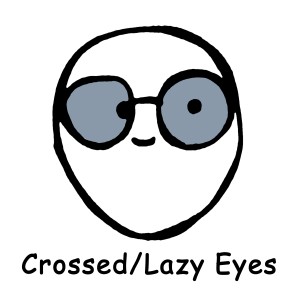 Amblyopia is commonly known as “lazy eye” and is described as reduced vision in one eye compared to the other. According to the National Institute of Health, amblyopia is the most common cause of visual impairment among children. A “lazy eye” is not lazy at all; it is a disorder of the brain’s ability to use both eyes together as a team. Amblyopia is due to suppression, or the brain actively ignoring the information coming from one eye. In addition to poor visual acuity, people with amblyopia are more prone to have difficulties with depth perception, eye movements related to reading, and quick visual decision making in driving and sports.
Amblyopia is commonly known as “lazy eye” and is described as reduced vision in one eye compared to the other. According to the National Institute of Health, amblyopia is the most common cause of visual impairment among children. A “lazy eye” is not lazy at all; it is a disorder of the brain’s ability to use both eyes together as a team. Amblyopia is due to suppression, or the brain actively ignoring the information coming from one eye. In addition to poor visual acuity, people with amblyopia are more prone to have difficulties with depth perception, eye movements related to reading, and quick visual decision making in driving and sports.
It is important to note that a child with amblyopia rarely has any symptoms; they have always viewed the world that way and have nothing to compare it to. Comprehensive eye examinations are the best way to identify children who are at risk for or already have amblyopia.
